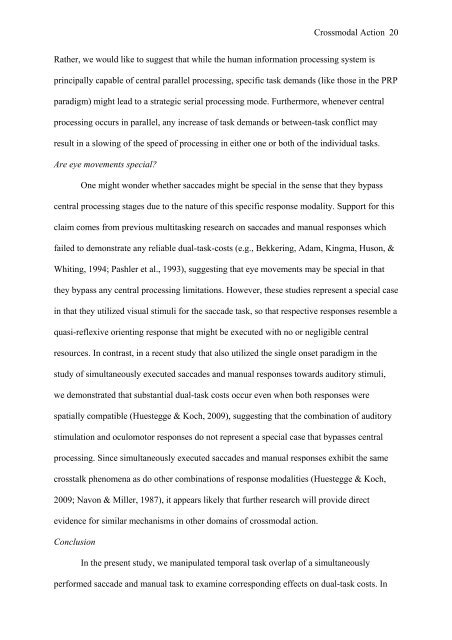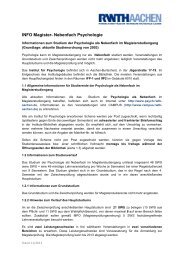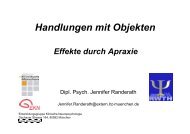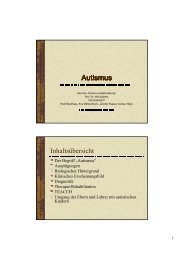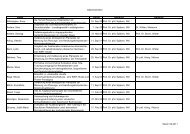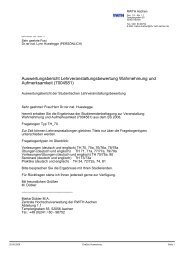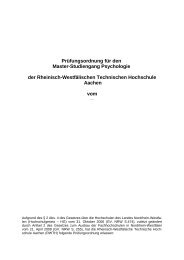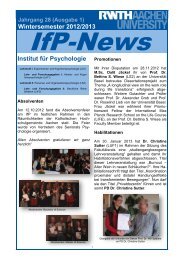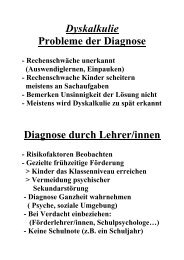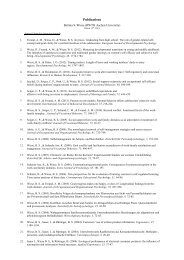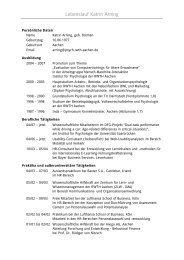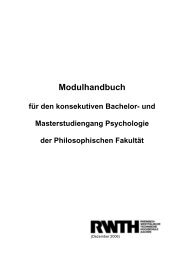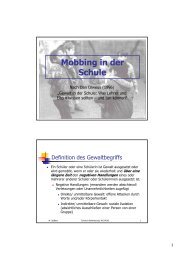Crossmodal Action 1 Crossmodal Action Selection - RWTH Aachen ...
Crossmodal Action 1 Crossmodal Action Selection - RWTH Aachen ...
Crossmodal Action 1 Crossmodal Action Selection - RWTH Aachen ...
You also want an ePaper? Increase the reach of your titles
YUMPU automatically turns print PDFs into web optimized ePapers that Google loves.
<strong>Crossmodal</strong> <strong>Action</strong> 20<br />
Rather, we would like to suggest that while the human information processing system is<br />
principally capable of central parallel processing, specific task demands (like those in the PRP<br />
paradigm) might lead to a strategic serial processing mode. Furthermore, whenever central<br />
processing occurs in parallel, any increase of task demands or between-task conflict may<br />
result in a slowing of the speed of processing in either one or both of the individual tasks.<br />
Are eye movements special?<br />
One might wonder whether saccades might be special in the sense that they bypass<br />
central processing stages due to the nature of this specific response modality. Support for this<br />
claim comes from previous multitasking research on saccades and manual responses which<br />
failed to demonstrate any reliable dual-task-costs (e.g., Bekkering, Adam, Kingma, Huson, &<br />
Whiting, 1994; Pashler et al., 1993), suggesting that eye movements may be special in that<br />
they bypass any central processing limitations. However, these studies represent a special case<br />
in that they utilized visual stimuli for the saccade task, so that respective responses resemble a<br />
quasi-reflexive orienting response that might be executed with no or negligible central<br />
resources. In contrast, in a recent study that also utilized the single onset paradigm in the<br />
study of simultaneously executed saccades and manual responses towards auditory stimuli,<br />
we demonstrated that substantial dual-task costs occur even when both responses were<br />
spatially compatible (Huestegge & Koch, 2009), suggesting that the combination of auditory<br />
stimulation and oculomotor responses do not represent a special case that bypasses central<br />
processing. Since simultaneously executed saccades and manual responses exhibit the same<br />
crosstalk phenomena as do other combinations of response modalities (Huestegge & Koch,<br />
2009; Navon & Miller, 1987), it appears likely that further research will provide direct<br />
evidence for similar mechanisms in other domains of crossmodal action.<br />
Conclusion<br />
In the present study, we manipulated temporal task overlap of a simultaneously<br />
performed saccade and manual task to examine corresponding effects on dual-task costs. In


